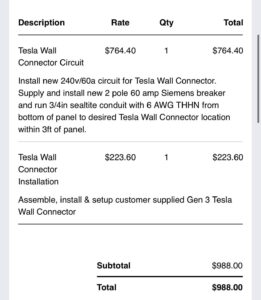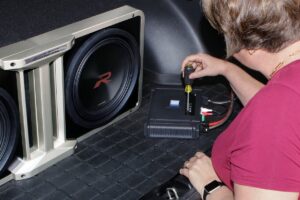Curious about whether unhooking your battery will clear those pesky codes on your vehicle? The short answer is yes, it can certainly do the trick. But let’s dive deeper into this topic and understand why it works. When you unhook the battery, it resets the vehicle’s computer system, wiping out any stored codes in the process. It’s like giving your car a fresh start, allowing it to recalibrate and reevaluate its performance. However, keep in mind that this isn’t a guaranteed solution for all issues, so proceed with caution and consult a professional if needed. Now, let’s explore the ins and outs of how unhooking your battery can clear those codes.
Will Unhooking Battery Clear Codes?
The check engine light is a dreaded sight for any driver. When it illuminates, it indicates that there is a problem with your vehicle. To identify the issue, modern cars are equipped with an onboard diagnostic (OBD) system that stores trouble codes. These codes provide valuable information to mechanics about the specific problem. However, there is a common misconception that simply unhooking the battery will clear these codes. In this article, we will delve into whether unhooking the battery will indeed clear the codes and explore the implications of doing so.
The Purpose of the OBD System
Before we delve into the topic at hand, let’s first understand the purpose of the OBD system. The OBD system is designed to monitor various vehicle components and systems, such as the engine, transmission, and emission control system. When an issue is detected, the OBD system generates a trouble code, which is specific to the problem. These codes are stored in the vehicle’s computer memory and can be retrieved using a diagnostic scanner.
What Happens When You Unhook the Battery?
Many drivers believe that disconnecting the car battery will automatically clear the trouble codes and turn off the check engine light. While unhooking the battery does reset the system, it is not a foolproof method for clearing codes or resolving underlying issues. Here’s what actually happens when you disconnect the battery:
- Code Clearing: Disconnecting the battery erases temporary fault codes that may not indicate a serious problem. However, it does not clear permanent codes that highlight ongoing issues.
- Learning Process Reset: Disconnecting the battery also resets the vehicle’s learning process, which includes adaptive systems that adjust to driving patterns over time. This can temporarily affect the vehicle’s performance until the system relearns optimal parameters.
- Ongoing Issues: If a persistent problem triggers a trouble code, disconnecting the battery will not fix it. The code will likely reappear once the vehicle is driven again. Unhooking the battery merely masks the symptoms temporarily.
Why Clearing Codes Isn’t Always Helpful
While clearing codes might seem like a quick fix to get rid of the annoying check engine light, it can actually hinder the diagnostic process and potentially mask underlying issues. Here are a few reasons why clearing codes without addressing the underlying problem may not be helpful:
- Lack of Information: Trouble codes provide valuable information about the specific problem affecting your vehicle. By clearing the codes, you effectively erase this valuable diagnostic information, making it more difficult for mechanics to identify and fix the issue.
- Emissions Testing: If you live in an area where emissions testing is required, disconnecting the battery will not allow the vehicle to go through the necessary drive cycles to complete the emissions monitors. As a result, the vehicle may fail the emissions test.
- Hidden Issues: Temporary fault codes may indicate an intermittent problem, such as a faulty sensor or loose connection. By clearing the codes, you may inadvertently mask these hidden issues, making it more difficult to diagnose and repair in the future.
Proper Diagnostic Procedures
To effectively diagnose and address the underlying issue causing the check engine light, it is essential to follow proper diagnostic procedures. Here’s what you should consider:
- Scan the Codes: Start by using a diagnostic scanner to retrieve the trouble codes. This will provide valuable insights into the specific problem.
- Research the Codes: Once you have the trouble codes, research them to understand their meaning and potential causes. This will help you narrow down possible solutions.
- Addressing the Issue: Determine the underlying problem and take the necessary steps to fix it. This may involve replacing faulty components, repairing wiring issues, or addressing other mechanical or electrical problems.
- Clearing Codes Properly: Instead of simply unhooking the battery, use a diagnostic scanner or disconnect the battery terminals and touch them together to discharge any remaining voltage. This will ensure a proper reset of the system.
When Unhooking the Battery Can Be Helpful
While unhooking the battery might not be a reliable fix for clearing codes, there are a few instances where it can be helpful:
- Temporary Malfunction: In some cases, the check engine light may illuminate due to a temporary malfunction, such as a loose gas cap. Disconnecting the battery can clear the code and turn off the light, but it will likely reappear if the problem persists.
- Resetting Adaptive Systems: If you have made modifications to your vehicle or have experienced performance issues after repairs, resetting the adaptive systems by disconnecting the battery can help recalibrate them.
Unhooking the battery may clear temporary fault codes and turn off the check engine light, but it is not a reliable method for resolving ongoing issues. To effectively diagnose and fix the underlying problem, it is important to follow proper diagnostic procedures and address the root cause. Clearing codes without addressing the underlying issue can potentially mask problems and hinder the diagnostic process. Remember to use a diagnostic scanner or discharge any remaining voltage to ensure a proper reset of the system.
Frequently Asked Questions
Will disconnecting the battery clear the error codes?
Disconnecting the battery can sometimes clear the error codes, but it’s not guaranteed to work for all situations. Here are a few factors to consider:
Can I clear the codes by simply disconnecting the negative terminal?
Disconnecting the negative terminal of the battery is a common method used to clear codes. However, it may not always be effective. It’s recommended to disconnect both the positive and negative terminals and then wait for a few minutes before reconnecting them to ensure a complete power reset.
Does disconnecting the battery reset the check engine light?
Disconnecting the battery can reset the check engine light temporarily, but if there is an underlying issue causing the error codes, the light will likely illuminate again once the problem is detected. It’s important to diagnose and address the root cause of the codes to prevent the light from reappearing.
Will resetting the error codes affect the vehicle’s performance?
Resetting the error codes by disconnecting the battery will not directly affect the performance of the vehicle. However, if there is an underlying issue causing the codes, it’s important to address it promptly to avoid any potential negative impact on the vehicle’s performance or fuel efficiency.
How long should I disconnect the battery to clear the codes?
It’s generally recommended to disconnect the battery for at least 15 minutes to ensure the codes are cleared. This allows enough time for the vehicle’s electronic systems to fully reset. However, keep in mind that clearing the codes without addressing the root cause may only provide a temporary solution.
Final Thoughts
Unhooking the battery is a common practice when trying to clear codes in a vehicle. By disconnecting the battery, the power supply to the car’s onboard computer system is interrupted, causing it to reset. However, it’s important to note that unhooking the battery may not always clear all the codes. Some codes may persist even after reconnecting the battery. Additionally, disconnecting the battery can also reset other settings in the vehicle, such as radio presets and clock settings. Therefore, while unhooking the battery can be a useful troubleshooting step, it is not guaranteed to clear all codes.



